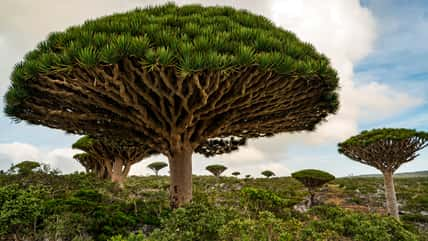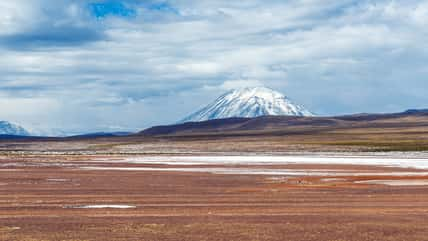An Amber Fossil Has Been Discovered In Antarctica For The First Time

For the first time ever, researchers have discovered an amber fossil in Antarctica. It provides the best evidence there is of an ancient swampy rainforest that once covered the continent during the era of dinosaurs about 90 million years ago.
Amber is fossilized resin or sap from coniferous trees that can trap plants, insects, small animals, or other organic matter as it hardens. Antarctica was the only continent on which amber fossils had not been found—until now.
Researchers unearthed a tiny piece of amber in sediment cores from beneath the seafloor off the coast of Pine Island Glacier on Antarctica’s west coast. It is about 0.002 inches across and was collected at a depth of around 3,100 feet.
The amber fragment dates back to about 90 million years ago during the Cretaceous period (145 million to 66 million years ago). At that time, a temperate rainforest grew over much of Antarctica.
The continent may currently be covered in ice, but it used to be warm and wet enough to host trees that could produce resin. The rainforest was similar to those in New Zealand today.
“This discovery allows a journey to the past in yet another, more direct way,” said Johann Klages, the lead author of the study and a sedimentologist at the Alfred Wegener Institute in Germany. “Our goal now is to learn more about the forest ecosystem.”
Since the early 19th century, scientists have excavated fossilized wood and leaves in Antarctica that date back to the time of the supercontinent Gondwana.
As Antarctica separated from Australia and South America toward the South Pole, it is unclear what happened to its forests.
In 2017, researchers drilled into the seafloor to collect the sediment cores that were analyzed in the study. Later, it was revealed that they contained the fossils of roots, pollen, spores, and other remains from flowering plants, confirming that a Cretaceous-era rainforest existed in Antarctica.

Sign up for Chip Chick’s newsletter and get stories like this delivered to your inbox.
The amber fragment was only discovered when researchers broke up the materials into thousands of tiny pieces and used florescent microscopy to scan each one.
They found signs of resin flow, which occurs when sap leaks out of trees to seal the bark against damage from parasites or wildfires.
The Cretaceous was one of the warmest periods in the history of the Earth, and volcanic deposits found on Antarctica and nearby islands exhibit evidence of frequent forest fires during that time.
The amber was remarkably well-preserved even though it was buried under the seafloor for so long. Normally, amber would dissipate under such conditions.
It was likely preserved and fossilized due to high water levels that quickly engulfed it, protecting it from exposure to sunlight and oxygen.
The new finding could pave the way to more discoveries of amber in Antarctica, which can add to the picture of what Antarctica’s rainforest used to look like and how dinosaurs interacted with it.
The study was published in the journal Antarctic Science.
More About:News





